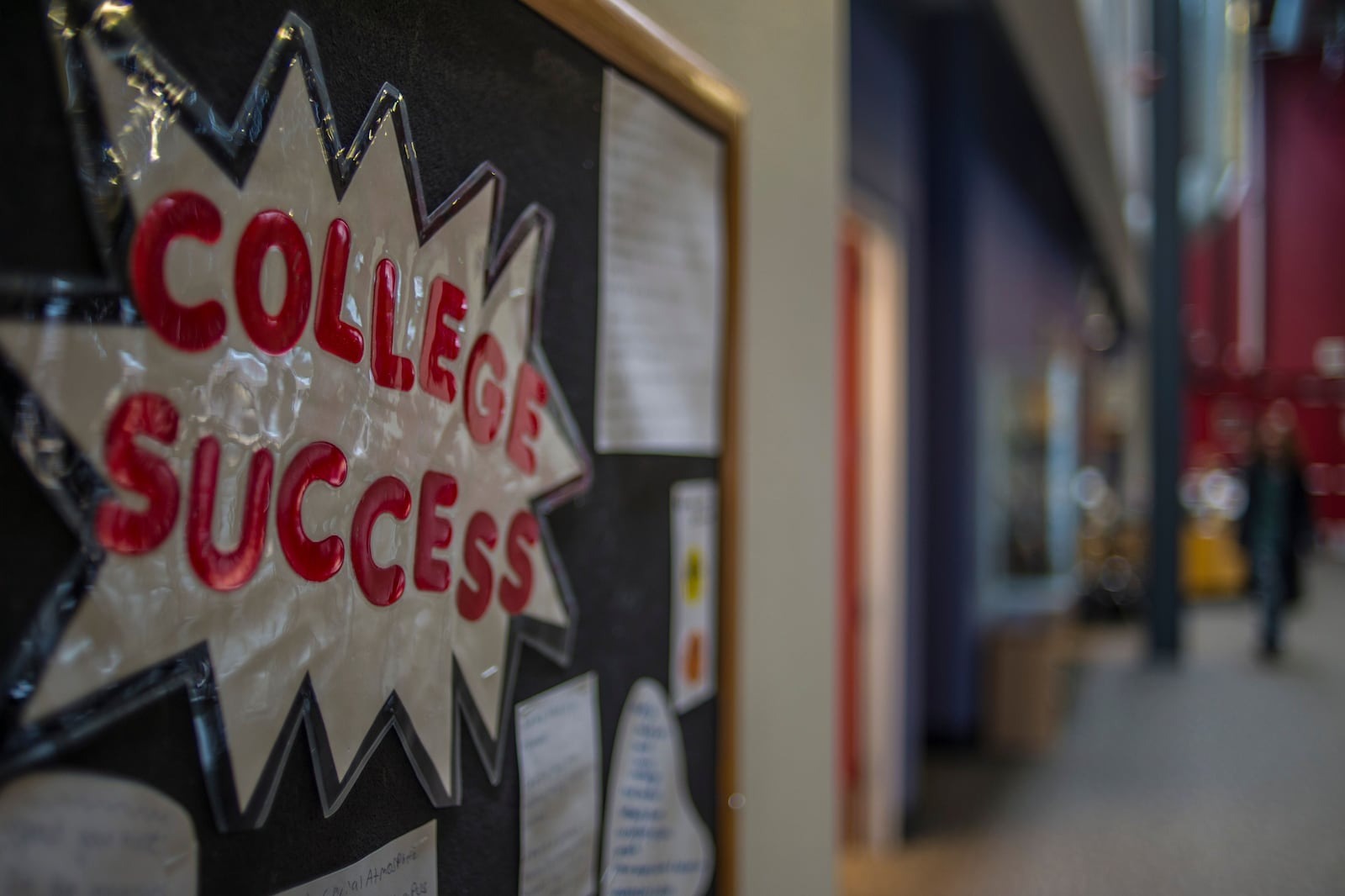
This story was originally published by Chalkbeat. Sign up for their newsletters at ckbe.at/newsletters.
By Jason Gonzales, Chalkbeat
Thousands of students, including in Newark, Chicago, and the Denver area, are helping test out federal financial aid forms before they go live to the broader public on or before Dec. 1.
The testing, which is in its second of four rounds, is meant to identify glitches that made it difficult for many students to fill out the Free Application for Federal Student Aid last school year. The hope is that by testing the form this time around, the U.S. Department of Education will be able to deliver on the promise of the Better FAFSA — a simpler form that offers a faster overall experience than the previous version.
Advocates say the testing is a welcome change from last school year when problems with a botched overhaul of the form led to over 200,000 fewer students completing the form. Nationally, first-year student enrollment is also down about 5% this fall, according to numbers from the National Student Clearinghouse. But researchers are unclear on the exact cause that led to declines.
The wide range of communities chosen for testing include many of the student groups who struggled most to fill out the form last year — those who have immigrant parents who don’t have a Social Security number and those who are the first in their family to go to college.
So far, advocates and officials who have helped with the testing report fewer problems overall, as well as what they’ve said is “cautious optimism” that the FAFSA should function as needed to help students qualify for financial aid, grants, and scholarships that help them offset the cost of college.
By participating in the testing, students get early access to completing the form, extra technical assistance, and their information sent earlier to colleges of their choice.
National College Attainment Network CEO Kim Cook said lingering issues are still being addressed on the 2025-26 form, including students struggling with identity verification and for mixed-status immigrant students. NCAN supports members to help students get to college and graduate.
“Fundamentally, testing a system before launch is a best practice,” Cook said. “I think this year it’s especially important because of what we learned in last year’s 2024-25 FAFSA rollout.”
The federal government revamped the FAFSA form last year and released it on Dec. 31, three months later than typical. While the Better FAFSA, as it is now called, proved to be shorter and easier when functional, the technical issues hurt the process.
Students nationwide help test the FASFA
A second round of beta testing launched on Oct. 15 with 16 colleges, nonprofits, and school districts participating. The third round of testing will begin in early November, and the last round will start in mid-November.
Here are the schools and organizations selected for the second round of testing:
- Adams City High School (Colorado)
- Advise Texas College Advising Corps (Texas)
- Arizona State University (Arizona)
- Camino Nuevo Charter Academy (California)
- Chicago Public Schools (Illinois)
- Claflin University (South Carolina)
- College Match (California)
- College Possible Minnesota (Minnesota)
- Kentucky Higher Education Assistance Authority (Kentucky)
- Millsaps College (Mississippi)
- Newark Board of Education (New Jersey)
- uAspire (New York)
- University of Delaware (Delaware
- University of Illinois Chicago (Illinois)
- University of Miami (Florida)
- University of North Carolina at Chapel Hill (North Carolina)
The U.S. Department of Education has been selecting beta testing sites to help troubleshoot problems and has employed volunteers from community organizations, government agencies, districts, and high schools.
The plan is to expand the number of students participating in each round.
In the first round of testing, about 650 high school students helped test the FAFSA through the first half of October. Another 3,500 students, including students already enrolled in college, are testing the FAFSA in the second round, according to the department.
A spokesperson for the department said participants are selected based on criteria that include the student population, geographic location, and type of school.
The testing includes colleges and high schools from rural, urban, and suburban areas, and the department sought out students who are the first to college in their family, from immigrant backgrounds, and who have never filled out the form.
Schools report positive testing experiences
Colorado’s Adams City High School, which educates predominantly students from low-income backgrounds and who are mostly Hispanic, was selected to participate in the second round of beta testing.
INSPiRE founder Jesse Ramirez, whose nonprofit organization helps mentor students to college, submitted the application for Commerce City high school officials. Ramirez’s nonprofit has worked with the district for years, including participating in a state grant that helps increase FAFSA completion rates. Last year, despite gains the year before, far fewer students filled out the form, he said — about 20% less.
The school held its FAFSA event on Oct. 16, which happened during fall break. Still, many students volunteered, he said. About 75 students showed up on the day of testing, Ramirez said.
During testing, Ramirez brought in over 50 financial aid experts, most of whom were bilingual. Families and volunteers were able to call Education Department officials who were staffed to support the testing.
Some students filled out the form in 15 minutes, while others needed more support.
Ramirez said most students encountered issues where they entered information that didn’t perfectly match tax records. This meant they were then not found in the system. For example, if a parent with a hyphenated last name used a hyphen when filing their taxes but the student didn’t use the hyphen when filling out the FAFSA, their application would get bounced back.
That error then needed to be sorted out through a phone call to the Education Department.
Ramirez said he’s pleased with how the testing went. With the FAFSA being delayed two months later than usual, every day counts, he said. Historically, about half of all students who complete the FAFSA do so between October and the end of the year.
“Why wouldn’t we do this?” Ramirez said. “Why wouldn’t we want to create these opportunities? There’s no idea that is too crazy, as long as it’s about empowering our kids and helping our families.”
Other districts, such as Chicago Public Schools, tested 150 of the 500 students they were allowed to test in the second round. The district will be allowed to test up to 2,000 more in the third testing window. The district expects more than 50 high schools to participate in the third round.
District leaders also want students to get ahead on the FAFSA, with a goal of 10% of Chicago Public Schools students to have the form completed early so they can get ahead and address barriers to getting to college, a spokeswoman said.
National advocacy groups report growing confidence in the Better FAFSA
National advocacy group leaders have said that while they wished for the FAFSA to be ready by October, the testing is important.
Jill Desjean, National Association of Student Financial Aid Administrator director of policy analysis, said the organization is 100% behind the testing. She’s especially happy that the Education Department has sought to test students from a variety of socioeconomic, geographic, and familial backgrounds.
“It’s really important to be looking at every possible type of student who could be filling out a FAFSA and every type of family scenario they could be encountering,” she said.
The Education Department has provided updates on testing, and an Oct. 21 update showed that so far 2,830 students were able to complete the form during the two rounds of beta testing. Those students reported 93% satisfaction with the form. Almost 90% of students say they were able to complete it in a reasonable amount of time.
The top reason for a student’s FAFSA being rejected was a missing student or parent signature, according to the department. According to a Government Accountability Office investigation, many students last year saw signatures disappear after saving and re-opening the form. Officials say they are working through those issues.
Cook, with NCAN, said the testing has helped instill some confidence after last school year.
The Education Department has also been transparent in documenting the issues students are running into, she said. Some issues the department has detailed include usability issues and the ongoing signature problems.
“We’re seeing it largely work,” Cook said. “That doesn’t mean there aren’t still issues for us to address, but we’re clear on what the issues are, and I think they’ve been heard and they’re being worked on.”
Jason Gonzales is a reporter covering higher education and the Colorado legislature. Chalkbeat Colorado partners with Open Campus on higher education coverage. Contact Jason at [email protected].









